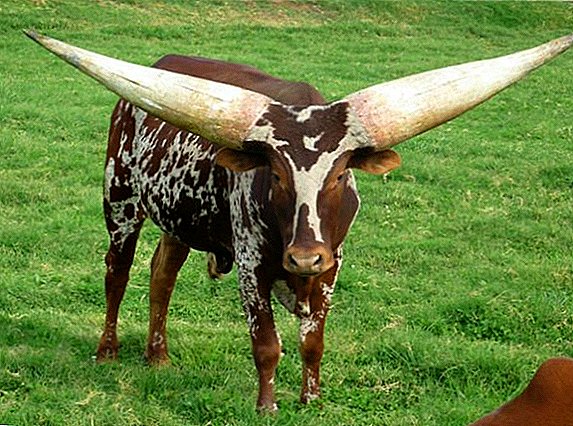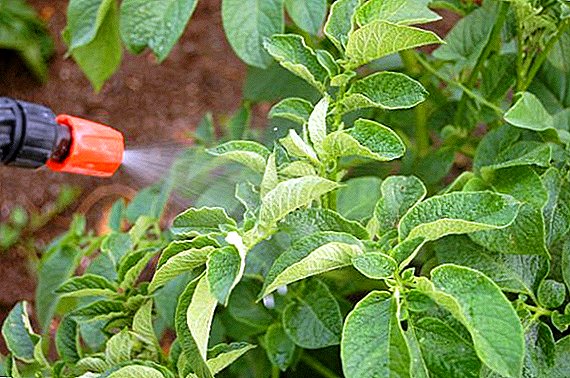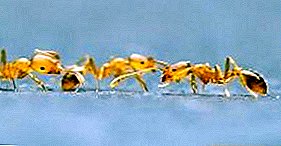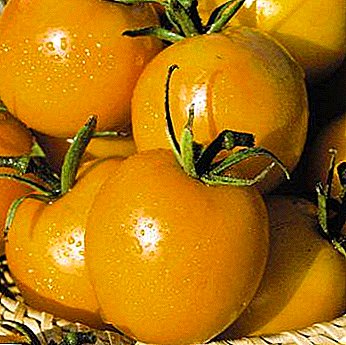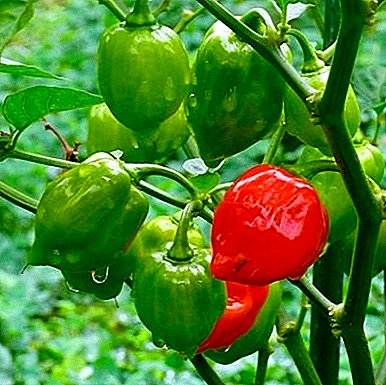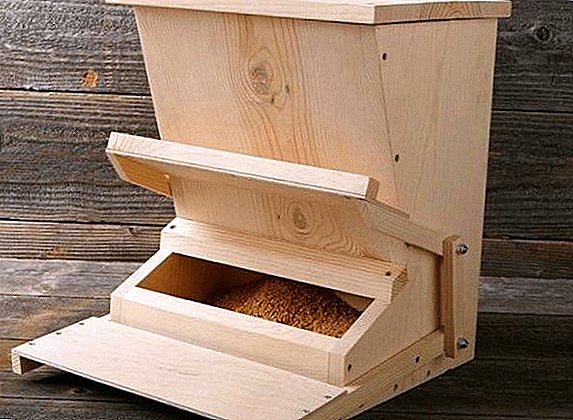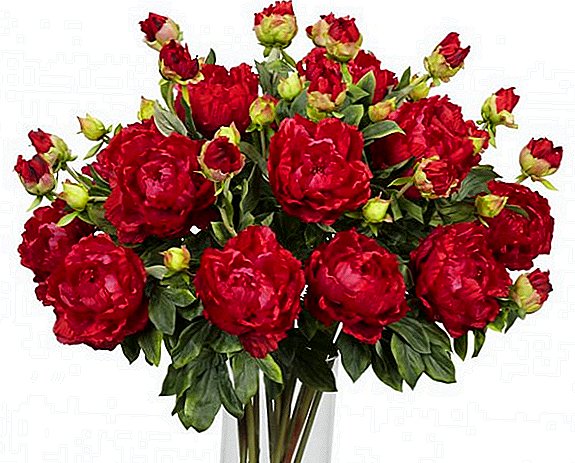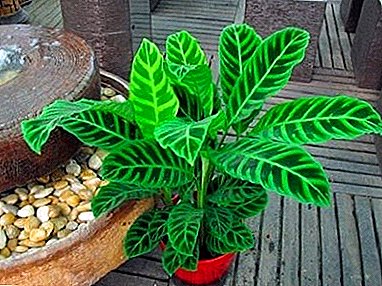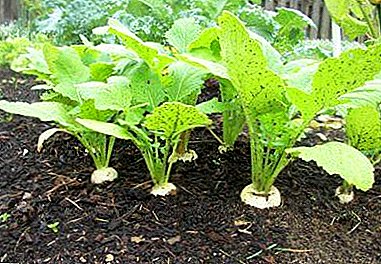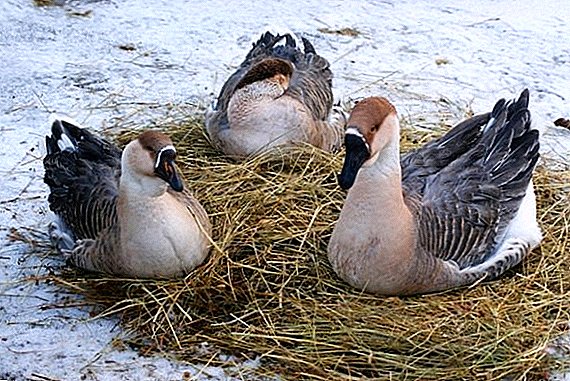 The Chinese breed of geese is one of the oldest.
The Chinese breed of geese is one of the oldest.
It is descended from a different ancestor than most other breeds.
You will learn about the features of the Chinese geese and the conditions of their breeding in this article.
Origin
The ancestors of the Chinese geese are waterfowl of the duck family under the name of dry beetles They were domesticated in Manchuria, in northern China and in Siberia. In the 18th century, they were brought from China to the territory of Russia. Since then, they have gained popularity among poultry farmers. 
Breeders used these geese for breeding new breeds, for example, Kuban, Pereyaslav, Holmogorsk, Gorky.
Did you know? Goose is one of the most ancient domestic birds. It was domesticated about 3 thousand years ago. There are references to geese in the Bible, ancient Egyptian and Roman writings. The appearance of this water bird is not much different from its ancient ancestor.
Description and Features
The Chinese goose stands out among its kindred due to its distinctive features in appearance. There are two varieties in the breed: white and gray.
Appearance and physique
Body Features:
- trunk - extended format, elevated in front;
- chest - rounded, highly raised;
- back - wide, with a convex upper part and a sharp drop to the tail;
- belly - not sagging, well pronounced;
- head - large, elongated;
- beak - medium, at the base has a large growth in the form of a cone. In the white variety, the outgrowth is colored orange, in the gray - in black. With age, the build-up increases in size;
- neck - the head is located on a long strongly arched and thin neck, similar to a swan;
- eyes - convex, dark color;
- wings - with a wide scope. In the lowered position, they fit well against the body;
- paws - medium, strong, widely spaced. Hocks orange with red;
- tail - elevated, covered with dense plumage.

Females differ from males in smaller size and smaller cone at the base of the beak.
Color
In the white variety, the plumage is pure white. In gray, most of the body is covered in brown with gray feathers, sometimes with the inclusion of whites.
The geese of gray color can also be found of such a breed as the Toulouse, Kholmogory, Tula.
Wings and tibiae painted milky, sternum - in white and brown. From the beginning of the beak, a dark strip is laid across the head and neck to the body.
Character
These are quite mobile, energetic birds, often showing aggressiveness.
Did you know? The oldest goose died in 1976. George (that was the name of the gander) at the time of death was 49 years and 8 months. The average life expectancy of these waterfowl is 25 years.
They badly get on with representatives of other breeds, shrill, often show the loud voice. Aggression is most often manifested in the period of laying eggs. 
Productive characteristics
Productive characteristics - This is the first thing for which the poultry farmers have fallen in love with the Chinese geese, and thanks to which they have been considered valuable breeds for more than one century.
For general information, it will be useful for you to learn about the features of breeding geese at home, what breeds of geese are considered profitable, what breeds of geese are considered the largest, when domestic geese start to fly, how many eggs a goose carries and what egg production depends on, how to distinguish a goose from a goose , how to slaughter, quickly pluck and chop the goose.
Precocity and live weight
Gooseies reach weights of 5-5.5 kg, goose - 4-4.5 kg. Poultry meat is characterized by high quality.
Early-ripening birds - at the age of 2-2.5 months, weight reaches 3-3.5 kg.
When they start to be born and what egg production per year
Chinese geese begin to race at the age of 9 months. Duration of egg production is 180 days. In a year, one goose is able to lay 80-90 eggs, which is considered a high indicator for geese. The mass of one egg is 140-160 g. The hatchability of goslings is 80-90%. 
Conditions for content
Chinese geese - birds that can put up with any living conditions, but to achieve the highest level of productivity, they still need to create comfort and coziness in the form of a house with certain requirements, a place for walking and swimming.
Bird house
To stay in the cold season geese necessarily need a house.
Learn how to build a house with your own hands.
The requirements for its arrangement are as follows:
- Its height should not be less than 2.1 m. The area should be calculated by the number of heads. For a comfortable stay of one adult will require 2 square meters. m
- In the house should install a thermometer and monitor the temperature. Birds feel good at +18 ° C. However, during fattening, it is recommended to reduce the temperature to + 12 ... +15 degrees - in such conditions, the poultry appetite increases, and it will consume more feed.
- It is also desirable to have a hygrometer in the house in order to control the humidity. For geese, 65-75% are considered to be optimal humidity indicators. Removal of excess moisture should occur with the help of goose equipment with high-quality ventilation. The easiest option - forced-air and exhaust.
- Lighting is important for egg production. Therefore, in the room where geese are kept, there must be windows, preferably in proportion to the floor area of 1:10, 1:15. Recommended day length for adults - 14 hours.
- Since geese are grown on the floor, it is necessary to prepare litter for them. A 40-50 centimeter layer of straw, wood shavings, hay, sawdust is put on the adobe or wooden floor. Periodically, the litter will need to add and change.

Walk and access to water
For proper geese development, well-being, and maximum productivity, they need a fenced and equipped place for walking and access to water. Laz, in which the birds will go for a walk from the house, is made from the south or from the southeast side.
The place for walking is fenced with a net not less than 1.3 m in height. Installation of a canopy is obligatory so that birds can hide under it from the sun or in case of precipitation. In place for walking set trough and drinkers.
Important! Since Chinese geese are adapted to grazing, it is advisable to walk them to grazing before frost - so they will increase more fat and be able to better endure the winter. With pasture grazing there is a significant savings in feed.
Even greater feed savings can be achieved with the release of waterfowl in the reservoir. There they will be able to find for themselves a lot of tasty and healthy food. Also swimming in reservoirs has a positive effect on the development of the bird and its health. 
Feeders and drinkers
There should be two feeders for birds in the poultry house and on the constant access route: one for feed, the other for river sand, shell rock, and gravel. They can be made of wood, plywood and other materials. They are suspended to a height of 20 cm from the floor.
Feeders for additional feeding of gander are placed 10 cm higher.
Water geese should be given only clean and fresh. She poured into a convenient drinking bowl.
You will be interested to know how to make a drinking bowl for geese with your own hands.
In winter, in an unheated house should be heated drinkers. The optimal size of the device for drinking - 15 cm on 1 specimen.
Also, the house should be equipped with nests. 2-3 geese can be carried in one nest. 
What to feed
Chinese geese do not have special requirements for feed. In the summer, they can easily find their own food while walking. They will never give up the yarrow, plantain, clover, dandelion. They like to pinch nettles, sorrel, alfalfa. In reservoirs they prefer to look for reed, cattail, nasturtium.
In the summer geese are fed once a day in the evening. In winter, meals should be two meals. It is important that birds are accustomed to eat at the same time. So they will independently return to the house at a certain time, and they will not need to be driven.
For three meals a day, waterfowl are transferred before the beginning of the breeding season.
Approximate diet
Goose feed should consist of cereals (oats, barley, wheat), bran, oilcake, and mineral supplements. It is necessary to alternate wet and dry food. It is strictly forbidden to feed only dry fodder. - this is fraught with intestinal blockage. 
The approximate daily menu of geese during the rest period may look as follows:
- grain mixture - 100 g;
- vitamin-herbal flour - 150 g;
- carrot - 150 g;
- animal products (cottage cheese, minced meat, meat and bone meal, milk, yogurt) - 50 g;
- potatoes - 200
Rates should vary depending on the period of development of the goose. - when preparing for egg-laying, intensive laying of eggs, completion of reproduction, moulting. Birds can be given silage, pine and spruce needles, hay, yeast.
Vitamin supplements
In the diet of the goose must be present supplements necessary to improve the digestion and nutrition of minerals:
- shell rock;
- a piece of chalk;
- sand;
- gravel.

On the day of mineral feed will need 25 g per individual.
Important! Guss need more food due to the greater weight gain and the need for more energy during fertilization of eggs. Therefore, they often equip them with higher feeders, where they place additional feeding from coarse feeds with succulent chopped root crops..
Advantages and disadvantages
According to reviews of breeders, the breed has many advantages, although it is not without flaws.
The advantages include:
- endurance;
- excellent meat quality;
- high egg production;
- good hatchability of young animals;
- early maturity;
- easy adaptation to different living conditions and food;
- adaptability to grazing;
- mobile lifestyle.

Among the disadvantages:
- aggressive nature;
- poorly developed instinct nasizhivaniya.
Thus, the Chinese geese are one of the oldest breeds. They are popular with the poultry farmers because of the high egg production, excellent meat qualities, unpretentiousness of the content and feed, endurance, low maintenance costs.


